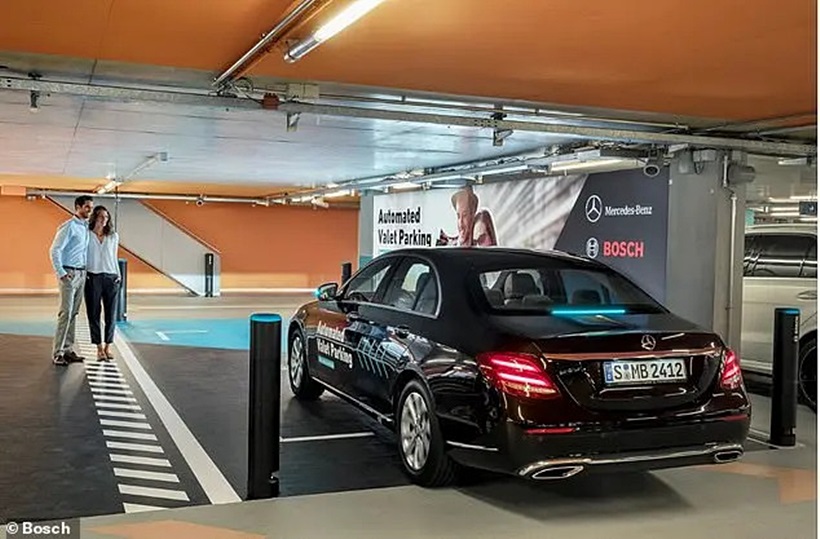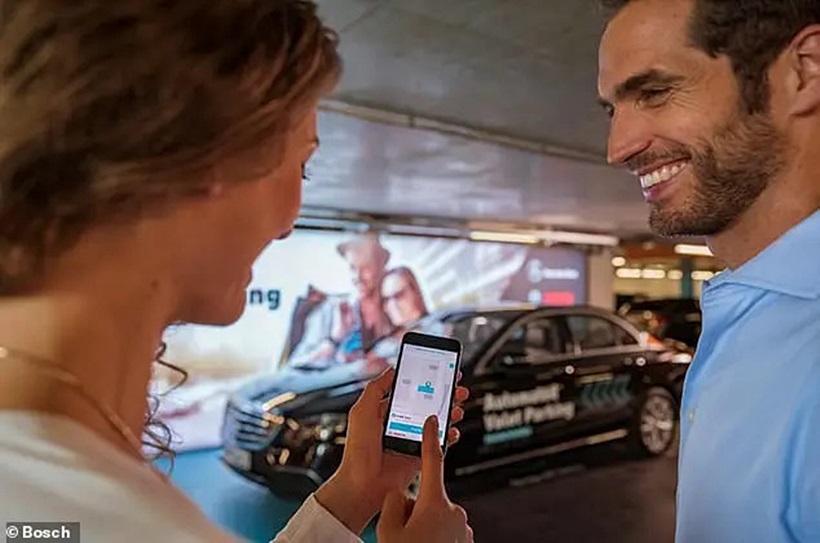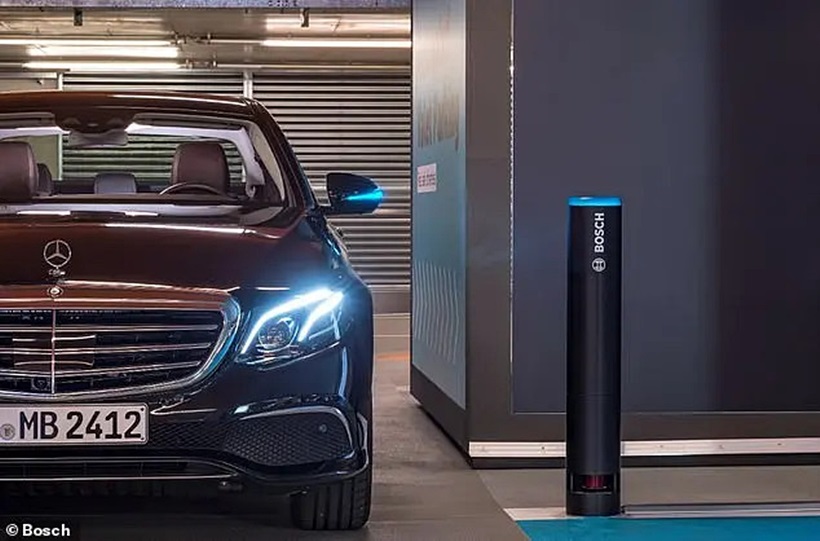Tue 30 July 2019:
Mercedes cars can now park themselves WITHOUT a person behind the wheel, as Germany gives the green light in fully automated tests
- All assignments come from the parking garage, not from the vehicle or the driver of the car
- The specially designed technology can be retrofitted to other parking garages
- Bosch says that fully automated garages of the future can contain 20 percent more cars
Experts say it can even boost the number of cars that a multi-storey car park can hold by maximizing the available space. The technology is based on infrastructure, which means that all orders come from the parking garage, not from the vehicle or the pedestrian.

German engineers have developed & # 39; the world’s first fully automated, non-driver parking function, which safely sends cars to the smallest garage spaces (photo)
The companies are currently testing the project in the parking garage of the Mercedes-Benz Museum, Stuttgart, where the service is accessible via a smartphone app. If successful, the technology can be retrofitted to other parking garages, with the pilot expected to lead to the expansion of autonomous parking, including in the UK. This process is based on the interaction between the technology of Bosch embedded in the garage and the automotive technology of Mercedes-Benz in the car.

The companies are currently testing the project in the parking garage of the Mercedes-Benz Museum, Stuttgart, where the service is accessible via a smartphone app
Bosch sensors in the parking garage monitor the passage and the environment and provide the information needed to guide the vehicle.
The technology in the car converts the assignments of the infrastructure into driving maneuvers. In this way, cars can even ride up and down slopes to move between stories in the parking garage. If the infrastructure sensors detect an obstacle, the vehicles stop immediately.
To use it, a person simply drives into the parking garage, gets out and sends the car to a parking space by tapping a smartphone screen. After the driver has left the parking garage to go his own way, the car drives to an allocated space and parks. & # 39; As a pioneer in automated driving, our project paves the way for automated valet parking to go mass-production in the future & # 39 ;, Michael Hafner from Daimler
Later the car returns to the delivery point in exactly the same way. When the car owner is ready to leave, she order the vehicle via the app.

Their car will start and drive autonomously to a & # 39; Pick-up Area & # 39; – all of which is detected by the intelligent parking garage system. Dr. Michael Hafner, the head of drive technologies and automated driving at Daimler AG, said: & # 39; As a pioneer in automated driving, our project paves the way for automated valet parking to go mass-producing in the future. & # 39;





